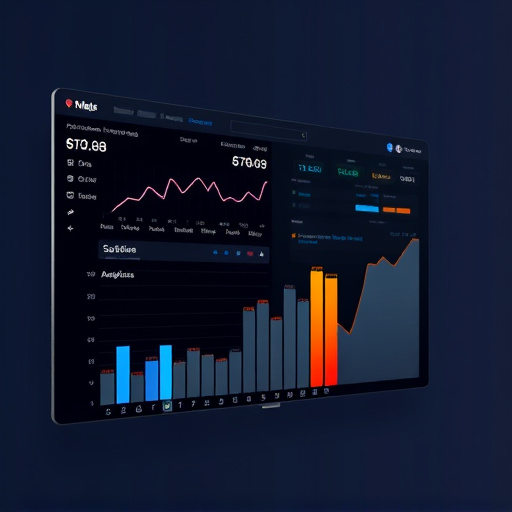Responsive web design is a modern approach that allows websites to adapt seamlessly across various screen sizes and devices, enhancing user experience on desktops, tablets, and smartphones. By incorporating strategic layouts, flexible media, and CSS media queries, it boosts website traffic and SEO, especially for Dallas-based businesses targeting local and global audiences. Consistency in design principles, such as typography, color schemes, spacing, and navigation structure, ensures uniform user experiences, builds brand trust, and encourages exploration, ultimately increasing online visibility and organic reach.
In today’s digital era, ensuring consistent user experiences across diverse devices and screen sizes is paramount for any website. Responsive web design (RWD), a game-changer that adapts content and layout, demands meticulous consistency to deliver seamless interactions. This article delves into the intricacies of RWD consistency, offering strategic insights on maintaining visual and functional harmony. From defining key elements to implementing reusable components and optimizing performance, we explore proven methods for achieving consistent, user-friendly web experiences.
- Understanding Responsive Web Design and Its Consistency Requirements
- – Definition of responsive web design
- – Why consistency is crucial in responsive design
Understanding Responsive Web Design and Its Consistency Requirements

Responsive web design is a modern approach to creating websites that adapt seamlessly to different screen sizes and devices, ensuring an optimal user experience regardless of whether someone is accessing it on a desktop computer, tablet, or smartphone. It’s not just about making a website look good on various screens; it involves a strategic layout, flexible images, and clever use of CSS media queries. The primary goal is to create one website that can increase website traffic by appealing to a broader audience without sacrificing performance or functionality.
Maintaining consistency in responsive web design means adhering to certain principles that ensure the website looks and behaves uniformly across devices. This includes consistent typography, color schemes, and spacing, as well as a logical and intuitive navigation structure. For instance, in the Miami area, where many businesses focus on both local and global audiences, SEO services can play a pivotal role in enhancing a responsive design’s effectiveness. Similarly, Fort Worth-based companies should prioritize website design that accommodates various user interactions, from simple browsing to complex transactions, ensuring that each screen size and device type receives the same level of attention and functionality.
– Definition of responsive web design

Responsive web design is a crucial approach that ensures websites adapt and display optimally on various devices and screen sizes, from desktops to tablets and smartphones. It’s no longer a choice but an essential strategy in today’s digital landscape. With the ever-growing number of users accessing the internet via mobile devices, responsive design guarantees a seamless user experience regardless of the platform. This dynamic approach involves flexible layouts, images, and CSS that adjust automatically, providing consistent performance across all channels.
For businesses focused on local SEO Dallas, Google Business Profile optimization plays a vital role in this process. By implementing responsive design, Dallas-based companies can enhance their online visibility and local search rankings. Additionally, leveraging SEO services Dallas can further boost the website’s performance, ensuring it stays ahead of the competition in both local and global markets.
– Why consistency is crucial in responsive design

Consistency is the cornerstone of effective responsive web design. In a world where websites are accessed across countless devices and screen sizes, maintaining a unified user experience is paramount. A well-designed, consistent website instills trust in users, enhances their navigation, and encourages them to explore further, thereby increasing website traffic. This uniformity ensures that your brand message remains clear, regardless of whether visitors are on a smartphone, tablet, or desktop computer.
Moreover, consistency plays a pivotal role in improving search engine optimization (SEO). Search engines like Google prioritize websites with intuitive, consistent structures. A responsive design that follows established best practices can significantly improve your SEO services near me and the visibility of your website. Additionally, when users have a positive, consistent experience across devices, they are more likely to share your site with others, attracting new visitors and boosting your online presence—all without the need for costly SEO consultant near me services.
Maintaining consistency in responsive web design is paramount for creating seamless user experiences across various devices. By adhering to clear design patterns, utilizing flexible layouts, and ensuring uniform interactions, developers can deliver sites that are both aesthetically pleasing and intuitive. This approach not only enhances usability but also reinforces the brand’s identity, making it an indispensable practice in today’s mobile-first landscape.














